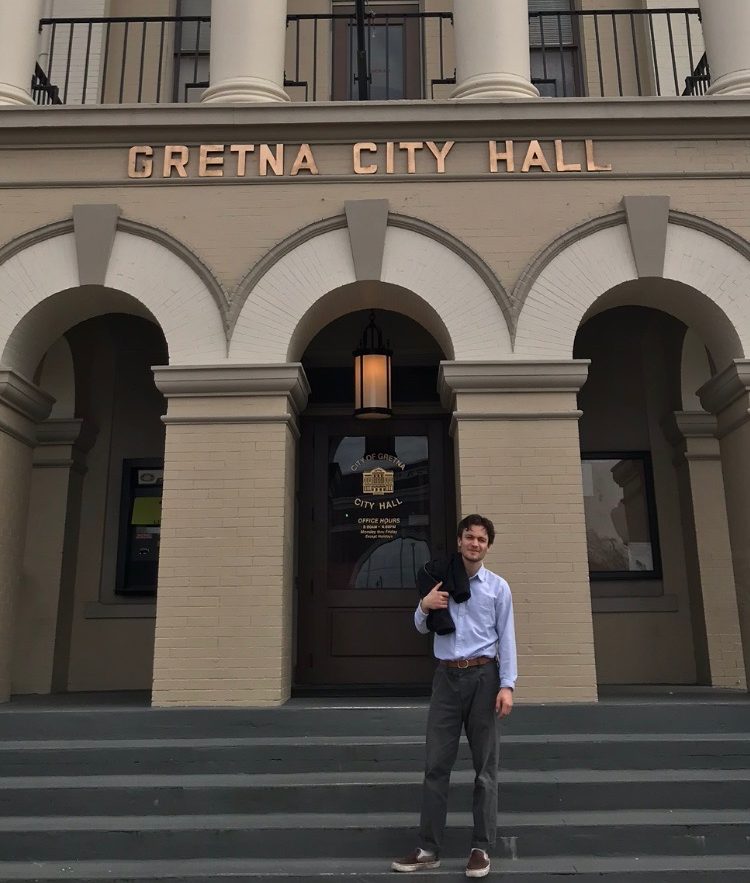Changemaker Catalyst Award recipient, Nic Moshner pursued an internship with Gretna City Hall during the 2018-2019 academic year. Nic is an undergraduate senior, Class of 2019, studying philosophy and economics.
Today, City-Planning must address a range of intersecting social and physical issues. In the Greater New Orleans area, the current conversation places a particular emphasis on preparing the built environment for future storms. These improvements no longer just attempt to minimize flood damage, but seek creative and inspiring solutions that allow neighborhoods to live and thrive alongside water. While interning in Gretna I had the opportunity to engage with some of these solutions, and learn about methods to approach many urban issues simultaneously.

One such experience came in the form of a conversation with Dana Brown, a local Landscape Architect who is credited with pioneering the use of green-infrastructure in public spaces. I met with Dana in September to discuss the progress of a project in Gretna’s downtown area, which aims to reduce the risk of floods and broaden the pedestrian right of way. Scanning the walls of her office, I observed renderings of other public projects that spoke to the specific water retention capacity of proposed parks, ponds, plazas, parking spaces, and so on. Upon closer inspection, I noted that the aesthetics of these proposed features varied greatly depending on the project’s location. It became clear to me that–besides a commitment to reducing water runoff–no two of Dana’s projects are alike. I found this fascinating, and so I asked her about the seeming variability of her approach to landscape architecture. Pointing to an image of a wetlands restoration project in New Orleans’ city park, Dana exclaimed that when starting a project, she and her team emphasize the importance of designing landscapes that adhere specifically to the cultural identity of the neighborhood they are designing for. She said that in her 30+ years of experience, the sensitivity of this approach produces public spaces that unite communities in the long-term. Managing to reconcile the technical aims of progressive infrastructure with the conservation of community identity, Dana’s work represents a careful attention to humanistic detail. While I have been exposed to similar concepts in my studies, the tangible evidence of Dana’s projects gave me hope that this kind of design is more than just some lofty ideal. As the discussion came to a close, I knew I wanted to further explore how I could apply community-centric design practices in my own work.
In recent months I have prepared a strategy for involving the people of Gretna in the design of their own park, and the future identity of their neighborhood. I recently discussed with city planners a few potential avenues of dialogue between residents and the city–most notably–canvassing efforts door to door, and a series of face to face meetings with residents, council members, architects and planners to discuss the appropriate forms and features of the park. As a coordinator of outreach, it is my responsibility to encourage community involvement by effectively portraying the scope of this project to residents. Hopefully, this communication will help preserve the district’s identity, and serve as a bridge between the government of Gretna and its people.
While my involvement in the community outreach effort for this project has only just begun, it marks a pivotal moment in my education. I am grateful for an internship that affords me the chance to take on a leadership role, and am genuinely excited to engage with this project to the fullest of my abilities.
